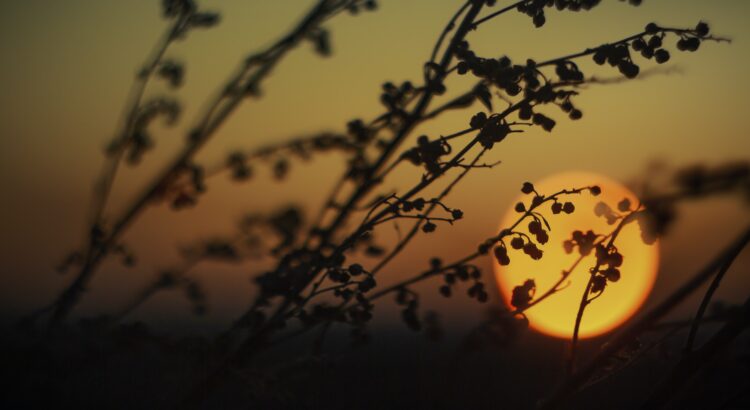Indic Academy (Indica) is pleased to announce the 2022 Fellows in Ayurvedic Nutrition. During the six-month training, 5 Fellows will be honing their skills to translate authentic ayurvedic knowledge and share their clinical experience for readers through practical, accessible published pieces for http://www.ayuve.in/, an Indica plant forward media initiative.
Rajeshwari Kalyanam, Chief Editor, Ayuve shares, ""Even as the entire world is moving towards healthy food, India with its rich ancient knowledge of Ayurveda, and the good food practices has so much to give. Be it the knowledge of food, the ingredients, or the way they must be consumed; the principles of Ayurvedic Nutrition are imbibed into the rituals and traditions since centuries. 'Ayuve' the plant forward media initiative of Indic Academy, strives to make this knowledge easily accessible to the consumers, practitioners, advocates, entrepreneurs and curious vegetarians. We are excited to source the authentic wisdom of nutrition and its sources through articulate ayurvedic physicians, who expertly bridge the ancient shastras with modern and practical instructions. The 2022 Indica Fellows in Ayurvedic Nutrition are all BAMS graduates, Dr. Aditi Jain, Dr Ankita Ankush, Dr Mamta Tiwari, Dr. Sumit Sur, Dr. Vyshna Ravindran.

Dr. Aditi Jain is a junior Ayurveda physician at ArogyaLaxmi Ayurvedic Health Care Centre in Jaipur, in the gurukula of Vd. ShriKrishna Khandel. Counseling patients with a range of clinical conditions and treatments, she details individualized ahara-vihara (food and lifestyle) guidelines while connecting each to authentic ancient prescriptions. With a BAMS* from Jayoti Vidyapeeth Women's University in Jaipur and a Diploma in Naturopathy & Diploma in Yoga, she is interested in the mental and emotional underpinnings of disease using a strong logic from the foundations of ayurvedic sciences. She loves history and the philosophy of science and medicine and loves to cook and experiment with Rajasthani & Gujarati cuisine.
Dr. Ankita Ankush is an Ayurveda Medical Officer in Sonipat at the Dept of Ayush, Government of Haryana, in the National Capital Region. She earned a BAMS* from Kurukshetra University, Haryana, then completed a one-year certificate course in Kayachikitsa (Internal Medicine) from Rashtriya Ayurveda Vidyapeeth, New Delhi. She then worked for 7 years at a Panchkarma Center and subsequently completed an MD (Ayu) in Rasashastra & Bhaishjya Kalpana (medicine-making) from the SJG Ayurvedic Medical College in Koppal, Karnataka. She is an avid daily cook for 6 people including her 2 kids, has a daily yoga practice, and loves to travel and explore nature and heritage sites.
Dr. Mamta Tiwari is an assistant professor in the Department of Swasthavritta and Yoga in the Faculty of Ayurveda at the Institute of Medical Sciences, Banaras Hindu University, in Varanasi. She completed a BAMS* at Lucknow University, an MD (Ayu) at the National Institute of Ayurveda in Jaipur where she researched Ashwagandha, and a PhD at BHU. She is an active Ayurvedic health and Yoga consultant in clinical practice dedicated to Ayurvedic Lifestyle Medicine. She enjoys exploring the ancient wisdom of Ayurveda in context of contemporary sciences and uses her findings to assist in her patient care, research work, and over 40 publications. She is also an inspired cook for her two children.
Dr. Sumit Sur is an Ayurveda Medical Officer in Bankura at the Patrasayer Primary Health Care centre of the Government of West Bengal. Before he earned his BAMS* from Rajib Gandhi Memorial Ayurvedic College and Hospital, West Bengal University of Health Sciences, he developed medicinal plant gardens throughout West Bengal and provided technical support to farmers interested in the local medicinal flora and fauna. He is a regular Bengali newspaper columnist at AnandaBajar Patrika, Bartaman Patrika, and Sangbad Pratidin.
Dr. Vyshna Ravindran earned a BAMS* degree from The Tamil Nadu Dr. MGR Medical University and is currently pursuing an MD(Ayu) at Vaidyaratnam P.S. Varier Ayurveda College in Kottakkal, Kerala, where she is focused on the study of diabetic peripheral neuropathy. She is committed to the integration of modern and ancient sciences preserving the profundity of science in Ayurveda. She speaks Malayalam, English, Tamil, Hindi, and reads Sanskrt.

Indica Fellowship Director Dr Bhaswati Bhattacharya will utilize her experience as a columnist and best-selling Penguin author of 'Everyday Ayurveda', to help Fellows learn how to write for a global audience eager to understand plant-based diets, ancient regional Indian cuisine, and Ayurvedic nutrition. She is a Fulbright Specialist in Public Health, a family physician in the Dept of Medicine at Weill Cornell Medical College, and an appointed member of research literature review committees at the USA-NIH (National Institutes of Health). She holds doctorates in medicine, pharmacology and Ayurveda, and teaches ayurvedic nutrition on global platforms such as Indica Courses.
Through ayuve, Indica aims to foster a global community for plant-based ayurvedic nutrition, for foodies, by foodies, about foodies, providing valuable information bridging ancient wisdom with modern food trends.




